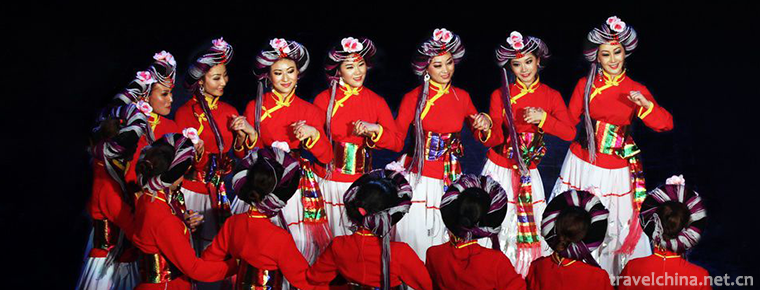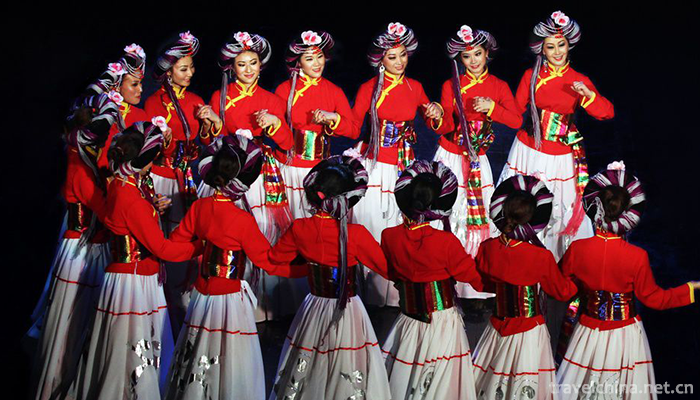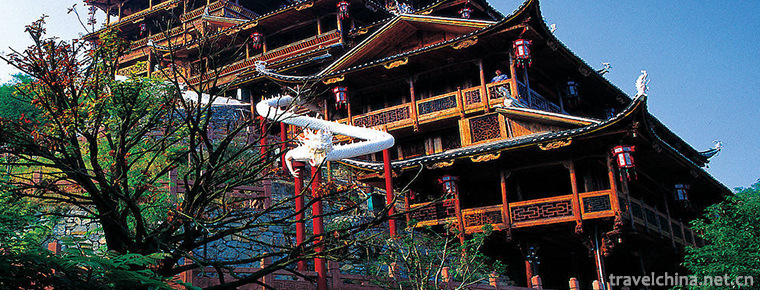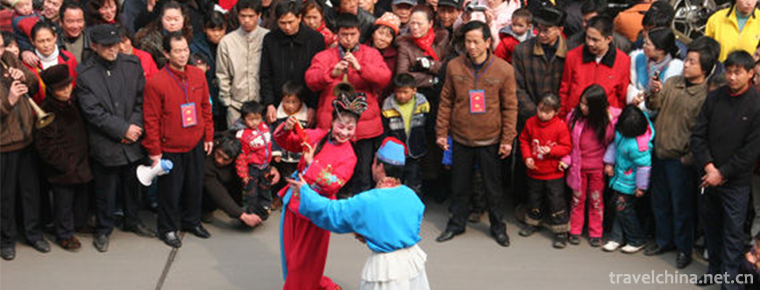2019-02-22

- By ChinaWiki.net
- Chinese Edition
- 2019-05-05
Nail twist Jiaru jiacuo
Jiaru is a traditional dance of Mosuo people in Lugu Lake, Yunnan Province. It is a song and dance for people to celebrate harvest, festivals and pray for gods.
In June 2008, Jiaru declared by Yanyuan County of Sichuan Province was listed in the second batch of national intangible cultural heritage list.
historical origin
The origin of Jiaru is also related to war. It is said that when Mosuo was attacked by foreign nationalities, tribal leaders launched their own nationalities and set a fire on the village gate dam. People surrounded the fire pond, shouted and stamped their feet, created momentum, encouraged prestige and defeated the enemy. After the victory, they sang around the fire pond and danced happily. As a result, Jiaru Dance has become a group entertainment square dance. It has become a song and dance for people to celebrate harvest, festivals and pray for gods. It also provides convenience for young men and women to talk about love and make friends with Asha.
artistic characteristics
Jiaru's dance rhythm is strong, the dance steps are vigorous and rough, happy and warm. The lead dancer is accompanied by bamboo flute or reed. The dancers hold hands tightly, cross five fingers, face the campfire and dance counter-clockwise. Dancing steps change with the speed of music rhythm. Sometimes people say "Arrow, Ruo" in accordance with the rhythm of dance steps. The cry, and sometimes someone led the singing of the armor rubbing song, people will join. When dancing, the girls'snow-white skirts were swirling lightly, silver chains were shining in front of their chests, hair braids made of green silk thread were floating in their ear temples, beads were shining in front of their foreheads, and the graceful Mosuo women added a few charms.
Whether it's the old war dance or the auspicious autumn harvest dance, the New Year dance, the dance melody is lively and warm, the footwork is changeable, the time is tight and the time is slow, regardless of hundreds of people and thousands of people, the dance is neat and unified. When fast, bold and vigorous, slow and leisurely. Every festival, Mosuo people take villages as units or several villages unite around the campfire, jumping around happily, often all night long. The so-called armor rubbing, armor is good, beautiful meaning; rubbing is dance, United means to dance for a better time or era.

Ask a Question
Your email address will not be published.



0 Questions